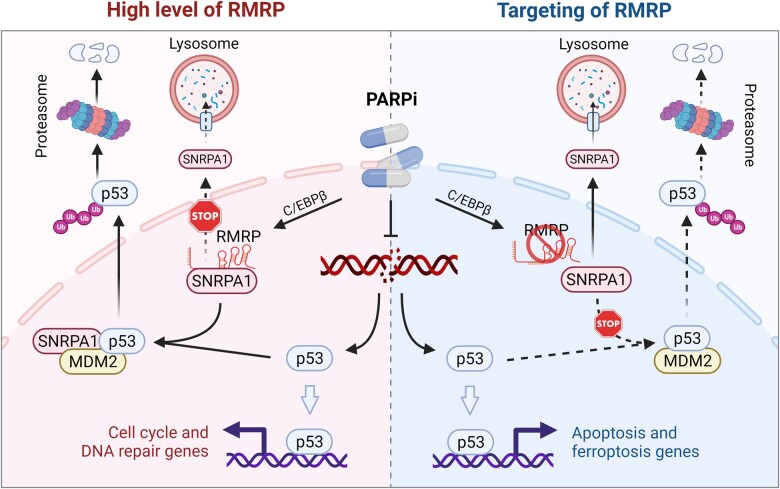Figure 1.
The role of the C/EBPβ‒RMRP‒SNRPA1‒p53 signaling pathway in tumor response to PARP inhibition. PARP inhibitors (PARPi) lead to the increase of RMRP expression by the transcription factor C/EBPβ. RMRP then interacts with and retains SNRPA1 in the nucleus to prevent the lysosomal degradation of the latter via the chaperone-mediated autophagy pathway. The nuclear SNRPA1 binds to p53 and promotes MDM2-mediated p53 ubiquitination and degradation, which compromises PARPi-triggered p53 activation, resulting in the protective upregulation of cell cycle and DNA repair genes (left panel). Targeting RMRP prompts the nuclear export and lysosomal degradation of SNRPA1. In the absence of SNRPA1, p53 can be fully activated by PARPi, thus eliminating cancer cells by inducing apoptosis or ferroptosis (right panel) (created with BioRender.com).

